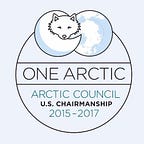WEEK 50: ARIZONA
From an Arizona Classroom to an Alaska Cabin: A Professor Takes a Closer Look at Arctic Carbon
by Dr. Ted Schuur, Professor of Ecosystem Ecology at Northern Arizona University in Flagstaff, Arizona.
I live with my wife Michelle, two children — Clara age 13 and Julian age 11 — and a short, fat Corgi named Pippen in Flagstaff, Arizona. We moved here amidst the ponderosa pines almost three years ago when Michelle and I were each offered research professorships at Northern Arizona University (NAU) in the Center for Ecosystem Science and Society, and the Department of Biological Sciences.
We were recruited to NAU because of our work on environmental change, a global issue that knows no state or country boundaries. This research focus has taken me to locations as remote as the tropical rain forest all the way to the Arctic tundra, with a common focus on a search for carbon in all of these expeditions. Society is now used to hearing about carbon dioxide and methane, two gas forms of carbon that persist in the atmosphere and trap heat. Increasing amounts of these two gases are the primary contributors to the warming that has been observed on our planet over the past one hundred and fifty years, since the start of the Industrial revolution.
I travel with my family each summer to Alaska, where we live in a rustic cabin in the woods just outside of Fairbanks, Alaska. Like a number of Fairbanks residents, our cabin has no running water, just the water that we haul in for cooking and cleaning. This serves as our home base to conduct field research around the state of Alaska during the long days of the short summer season. The population of Alaska swells in the summertime with people from Arizona and elsewhere, who, just like me, come north beckoned by the remoteness, the possibility for adventure, as well as for work in the seasonal industries like fishing and tourism.
What motivates my research at present, and takes me far from my home in Arizona on research trips, is trying to understand how Arctic ecosystems, in remote places far from where most people live, are responding to the warming temperatures on our planet. And in particular, how the carbon that has been stored frozen in permafrost over hundreds to thousands of years is vulnerable to changes in climate.
The population of Alaska swells in the summertime with people from Arizona and elsewhere, who, just like me, come north beckoned by the remoteness, the possibility for adventure, as well as for work in the seasonal industries like fishing and tourism.
Carbon stored in tundra ecosystems represents a balance of carbon taken from the air by plants as they grow, then deposited into the permafrost soils where it is slowly returned by the activity of soil micro-organisms as they decompose the dead organic matter, returning that carbon back to the atmosphere.
Plants seem to like it when conditions are warmer, so plant growth is increasing. If you just watch the tundra in the summertime and you look at the balance between what the plants are doing and what the soil is doing, the plants actually offset everything that happens in the soil. Plants are growing faster, getting bigger and taking carbon out of the air. From the perspective of climate change, that’s a good thing; it means tundra vegetation is making up for any carbon that is being lost from the soil.
But, there’s a catch…
The Arctic’s short summers do not make up for the long winters. My research group continues to document carbon emissions in the winter, and what happens is that while the plants are dormant, the microbes continue to eat the soil organic matter, and it turns out that they release enough carbon during the winter to offset everything the plants gained in the summer, and then some so the total balance shifts the ecosystem to a net source of carbon. This means that carbon is being moved from where it is has been historically stored in permafrost soils into the atmosphere.
While Arizona may seem far from the Arctic, we are linked by changes in climate. Releases of carbon from remote regions such as Alaska play a role in determining the temperatures in Arizona. With desert temperatures hitting maximum values in the summer how much hotter conditions might get in the cities in Arizona, is a question of great importance to the residents here.
About the Author: Dr. Ted Schuur is a Professor of Ecosystem Ecology at the Center for Ecosystem Sciences and Society in the Department of Biological Sciences at Northern Arizona University. His work focuses on the response of Arctic ecosystems in a warmer world, which is key for understanding how natural ecosystems interact with human emissions to control the overall pace of climate change. Dr.Schuur and his family spend each summer in Alaska. You can reach him at Ted.Schuur @nau.edu.
